I’ve been reading a bunch of Ars Magica 5th Edition lately – make sure you check out Samhaine’s Rules Summary posts – and it got me thinking about the interesting Stuff in a wizard’s laboratory. Going on adventures and spending downtime to do nothing but improve your laboratory is a completely valid campaign-long story. I don’t know that you want to go that far in a D&D game, unless all of the PCs are spellcasters in a cabal. Anyway, in this post, I want to suggest the kinds of magic items that spellcasters (and particularly wizards) accumulate and leave in their laboratories or sanctums.
I’m not presenting full rules for laboratories or sanctums at the moment; let’s assume I’ll come back to that in the future. For the time being, a laboratory or sanctum is a permanent location (I mean, you could move, but it would be expensive and difficult) where you store tools and materials for spell research and spell preparation. Magic items that are part of your lab are either only useful for spell research, or are too heavy or fragile to be of use elsewhere. As a result, they generally do not require attunement Improved spell preparation is a possible function of lab/sanctum magic items.
This has the incidental effect of discouraging casters from traveling if they can avoid it. If this becomes a problem in your campaign, address it by giving the PCs a ship, airship, (extradimensional) vardo, or Mordenkainen’s magnificent mansion.
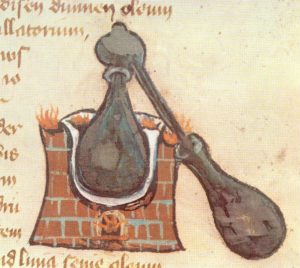
Humorial Alembic
Wondrous item, uncommon
This delicate piece of alchemical equipment is made from copper or glass. Nonmagical versions distill ordinary liquids; the magic of this alembic expands that to distillation and inspection of humors taken from any kind of creature. When used in combination with a set of alchemist’s supplies, your proficiency bonus is doubled for any ability check you make with them.
With an hour of labor, you can set the alembic to distilling any bodily humor down to still more fundamental parts. Distillation is complete after seven more hours, which does not require your direct attention. The typical humors are black bile, yellow bile, phlegm, and blood, but celestials and fiends have ichor in place of those, and other creatures might have stranger humors. From this, you can learn information about its capabilities. Roll a DC 20 Intelligence (alchemist’s supplies) check. On a success, pick three pieces of information from the list below; on a failure, pick one, and the humorial alembic becomes unusable for one week.
- The creature’s type and subtype
- The creature’s race (not applicable for all creature types)
- The creature’s age
- All curses affecting the creature at the time the humor was harvested
- All diseases affecting the creature at the time the humor was harvested
- All poisons affecting the creature at the time the humor was harvested
- The creature’s damage resistances or immunities (if any)
- The creature’s damage vulnerabilities (if any)
- The creature’s condition immunities (if any)
- The last spell cast by the creature before the humor was harvested
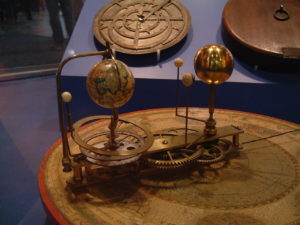
By Kaptain Kobold – https://www.flickr.com/photo_zoom.gne?id=127601212&size=m, CC BY 2.0, https://commons.wikimedia.org/w/index.php?curid=1097927
Conjurer’s Orrery
Wondrous item, uncommon
This large, fragile device is made of copper, bronze, or other precious metals, weighing 150 lb. It models the interactions between worlds, stars, moons, planes, and other cosmic forces. As part of a long rest, you can study this device and use it to enhance the spells you know or prepare. Choose one conjuration spell that you know or have prepared. When you cast that spell, roll 1d4. If the die result is greater than the level of the spell slot you expended, you regain the spell slot. Once you regain a spell slot in this way, you can’t do so until you finish a long rest. You can’t benefit from more than two similar items of any school at the same time (such as the illusionist’s mirror or the transmuter’s wheel).
Further, when you cast a conjuration spell within 20 feet of the orrery, you can choose to either double the spell’s duration or increase its saving throw DC by 2.
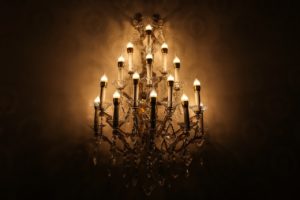
Abjurer’s Chandelier
Wondrous item, uncommon
This large, fragile chandelier of bronze and crystal weighs 1,000 lb., and must be installed so that it can be raised and lowered. When its candles are lit and it is lowered around you, you can study their interactions to enhance the spells you know or prepare. Choose one abjuration spell that you know or have prepared. When you cast that spell, roll 1d4. If the die result is greater than the level of the spell slot you expended, you regain the spell slot. Once you regain a spell slot in this way, you can’t do so until you finish a long rest. You can’t benefit from more than two similar items of any school at the same time (such as the illusionist’s mirror or the transmuter’s wheel).
Further, when you cast a abjuration spell within 20 feet of the chandelier, you can choose to either double the spell’s duration or increase its saving throw DC by 2.
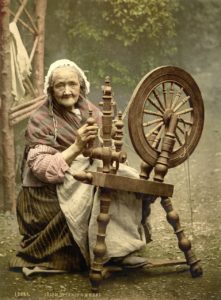
Transmuter’s Wheel
Wondrous item, uncommon
Alchemical transmutation of base metals is difficult business, but the fey have long known how to exalt straw into gold. The transmuter’s wheel offers the deeper truths of transmutation, rather than creating gold from base materials. While spinning any form of fiber or wire, you can study the magical sparks it throws off to enhance spells you know or prepare. Choose one transmutation spell that you know or have prepared. When you cast that spell, roll 1d4. If the die result is greater than the level of the spell slot you expended, you regain the spell slot. Once you regain a spell slot in this way, you can’t do so until you finish a long rest. You can’t benefit from more than two similar items of any school at the same time (such as the illusionist’s mirror or the diviner’s star charts).
Further, when you cast a transmutation spell within 20 feet of the wheel, you can choose to either double the spell’s duration or increase its saving throw DC by 2.
Rather than continue copying and pasting text, I’ll just mention that the rest of the items in this series are the diviner’s star charts, the enchanter’s cobweb, the evoker’s dragon wings, the illusionist’s mirror, and the necromancer’s bone cabinet. You’ll figure it out. Remember, just two from this list at a time.
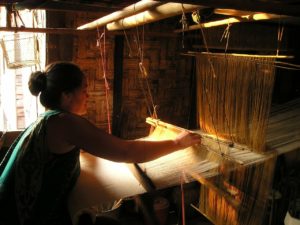
Celestial Loom
Wondrous item, legendary
This loom is made of the bones, sinews, and woven hair of angels and fiends. Though it would not be easy to destroy, it is enormous and heavy, making it difficult to transport. You can use the celestial loom as a set of weaver’s tools, and your proficiency bonus is doubled for any weaver’s tools ability checks when you do so.
With eight hours of uninterrupted labor and concentration on a question or problem, you can weave a cloth upon this loom that displays an image not of your own design. Roll a DC 25 Intelligence (weaver’s tools) or Wisdom (weaver’s tools) check. On a success, pick three pieces of information from the list below, and the loom becomes unusable for one week; on a failure, pick one, and the loom becomes unusable for one month. The answers you receive are accurate. While they are displayed symbolically, you automatically intuit their meaning.
- What is the zodiac sign (in any zodiac system) of one significant enemy or threat relating to this problem?
- Which sinister planets, moons, or stars exert influence in this problem, if any?
- Which god exerts the greatest influence in this problem, if any?
- Which Great Old One exerts the greatest influence in this problem, if any?
- Which archdevil or demon lord exerts the greatest influence in this problem, if any?
- Which archfey exerts the greatest influence in this problem, if any?
- Which primordials or empyreans exert influence in this problem, if any?
- Has a wish or Divine Intervention altered the factors of this problem significantly?
- Is the primary source of this problem extraplanar in origin?
- Which Transitive, Inner, or Outer Planes would offer me aid or succor in this problem, if any?
Design Notes
The goal, as indicated above, is to make a spellcaster working in their sanctum or laboratory during downtime an interesting experience. The alembic and the loom offer lower-level and higher-level information-gathering, in a strictly controlled way, while the other items suggest how a spellcaster within a day’s travel of their sanctum is particularly potent, and you especially don’t want to fight a spellcaster in their laboratory.
I haven’t developed the idea here, but I can readily imagine Rare or Very Rare items that offer Lair Actions to the attuned spellcaster. Magical mirrors, lanterns, cauldrons, and chained-up books seem particularly on-theme for that kind of thing. Sure, D&D spends more time with the PCs leaving home than getting attacked in their own parlors, but I think most PCs would still enjoy receiving this kind of thing and stashing it at home. Also, these could be great dungeon features in areas where the PCs take a long rest. Think of it as a small power-up for clearing an optional area of the dungeon.

Excellent collection of of items and ideas, gives people reasons to visit crazy wizards in their towers to get answers to obscure questions.
I’m so glad you enjoyed it!